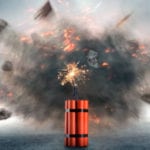 Technology
Technology  Technology
Technology  Humans
Humans 10 Everyday Human Behaviors That Are Actually Survival Instincts
 Animals
Animals 10 Animals That Humiliated and Harmed Historical Leaders
 History
History 10 Most Influential Protests in Modern History
 Creepy
Creepy 10 More Representations of Death from Myth, Legend, and Folktale
 Technology
Technology 10 Scientific Breakthroughs of 2025 That’ll Change Everything
 Our World
Our World 10 Ways Icelandic Culture Makes Other Countries Look Boring
 Misconceptions
Misconceptions 10 Common Misconceptions About the Victorian Era
 Mysteries
Mysteries 10 Strange Unexplained Mysteries of 2025
 Miscellaneous
Miscellaneous 10 of History’s Most Bell-Ringing Finishing Moves
 Technology
Technology Top 10 Everyday Tech Buzzwords That Hide a Darker Past
 Humans
Humans 10 Everyday Human Behaviors That Are Actually Survival Instincts
 Animals
Animals 10 Animals That Humiliated and Harmed Historical Leaders
Who's Behind Listverse?

Jamie Frater
Head Editor
Jamie founded Listverse due to an insatiable desire to share fascinating, obscure, and bizarre facts. He has been a guest speaker on numerous national radio and television stations and is a five time published author.
More About Us History
History 10 Most Influential Protests in Modern History
 Creepy
Creepy 10 More Representations of Death from Myth, Legend, and Folktale
 Technology
Technology 10 Scientific Breakthroughs of 2025 That’ll Change Everything
 Our World
Our World 10 Ways Icelandic Culture Makes Other Countries Look Boring
 Misconceptions
Misconceptions 10 Common Misconceptions About the Victorian Era
 Mysteries
Mysteries 10 Strange Unexplained Mysteries of 2025
 Miscellaneous
Miscellaneous 10 of History’s Most Bell-Ringing Finishing Moves
Top 10 Facts About the Battle of Stalingrad
The Battle of Stalingrad has been something has long fascinated me, the Soviets at the close of WW2 went on to become the antagonist in the Cold War, thus the Soviet contribution to the defeat of Nazi Germany is often overlooked here in the West, however without the sacrifices made by mostly untrained and poorly armed men, women and in some cases children, it is almost certain we would be living in a very different world today. The battle began on August 23rd 1942 and ended with Germans surrendering on February 2nd 1943. What would eventually bring about the downfall of Hitler began here, carnage, brutality and loss of life unlike any the world had ever seen would mark the bloodiest battle of the most destructive war in history. I’ve tried provide a mixture of well known and slightly more obscure facts to make this list interesting for both those who haven’t heard much about the topic and those who know a bit more about it. Now I present to you the Top 10 Facts About The Battle of Stalingrad.
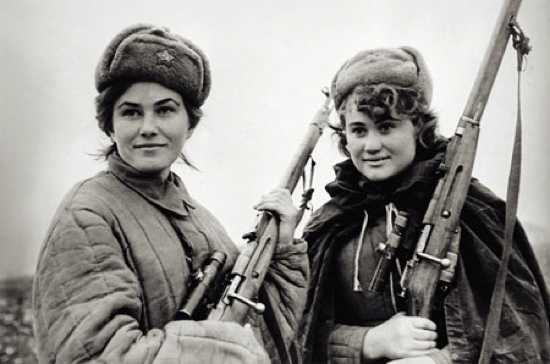
This regiment like many other anti-aircraft regiments in the Soviet Union at the time was made up entirely of young women, some of them not long out of high school. The 1077th is known for their fierce interception of the German 16th Panzer Division. On August 23rd 1942, the German 16th were tasked with destroying the Stalingrad Tractor Factory, which had been refitted to manufacture tanks. The attack came from the northern quarter of the city and as the Soviets were not expecting an attack from this quarter, the 1077th were completely unprotected by infantry. Armed with only thirty seven M1939 Air Defense Guns and facing an onslaught of German tanks, the young women of the 1077th did the only thing they could, improvise and fight. They dropped their anti-aircraft guns to the lowest elevation and fired out across German tanks and submachine-gunners, for two days they fought before finally being overwhelmed by the sheer number of Germans. The Germans, arriving at the positions they had been receiving such intense fire from were shocked to find the bodies of young women. The 1077th were no more but not before destroying 83 tanks, 15 infantry vehicles, killing 3 battalions of infantry and shooting down 14 aircraft. The German’s had yet to know it but the resistance put up by the 1077th would be a sign of things to come.
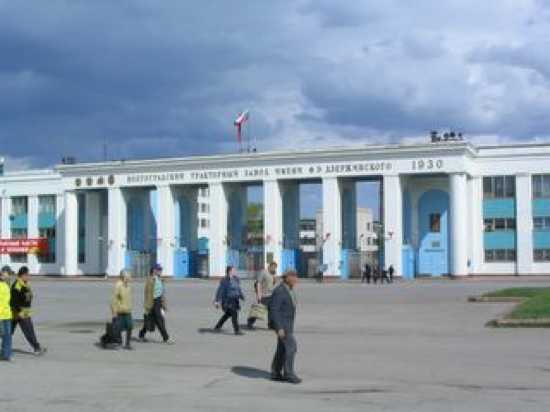
As mentioned above the Stalingrad Tractor Factory had been refitted to produce tanks, primarily the T-34. Being short on trained tank crews, most of the T-34’s were driven straight off the production line and into battle by volunteer factory workers. A lot of the time in the rush to drive back the Germans the T-34s went off the floor lacking paint and gun sights, crewed by the very people who a short time ago were putting them together. As quickly as the Panzer Divisions would destroy them, the tractor factory would push wave after wave of new tanks out the door and into battle. This makeshift battlefield production line proved invaluable in holding off the Nazi invasion until reinforcements and a counter-attack could be planned. The Stalingrad Tractor Factory was rebuilt after the war during Soviet restoration and stands today under the name Dzerzhinsky Tractor Works, up until it was declared bankrupt in 2005, it manufactured both tractors and military equipment.
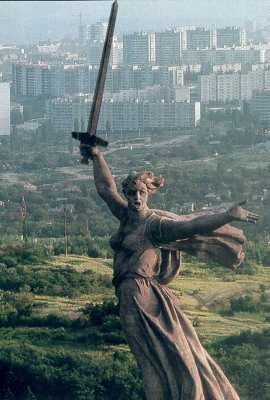
Very few spots on earth could lay claim to the shear loss of life experienced on it than Mamayev Kurgan, originally a 100 metro Tartar burial mound it became the focal point for the German Sixth Army’s attack on Stalingrad city centre. Originally captured briskly by the Germans on September 13th 1942, the very next day it was the site of a huge Soviet counterattack from 13th Guards Rifle Division which by September 16th had recaptured the hill. The cost was almost all of the 10,000 men that had went in two days previously. Over the next few weeks, the hill changed hands time and time again. So fierce was the fighting atop Mamayev Kurgen that at the battles end there would be around a thousand pieces of shrapnel and bone per square metro, the hill itself so scorched by shelling and gunfire that grass hadn’t even begun to grow almost a year later. In fact what was once a hill had become almost completely flattened during the numerous attempts to capture and hold it. In a poignant example of the horrors of war, in an excavation of the area in 1944 at the beginning of Soviet restoration, two soldiers from either side were found who having impaled the other with a bayonet to the chest, were then buried by an exploding shell, preserved amidst a battle that ended over a year previously.
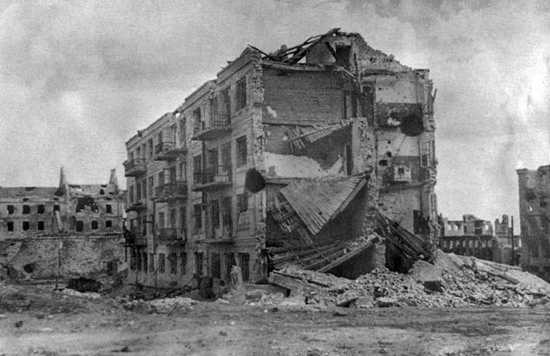
Junior Sergeant Yakov Pavlov was only twenty four years old when he was ordered to lead an assault on an apartment building adjacent to the River Volga, little did he know during what turned out to be a disastrous assault that the very building he was sent to seize would soon be named in his honor. At the assaults end Pavlov’s thirty strong platoon numbered only four men, with no reinforcements in sight, Pavlov and his remaining men proceeded to fortify the apartment building. It would be a week before reinforcements would arrive but the Junior Sergeant and four weary soldiers held tight, repelling wave after wave of German attackers from mounted machine guns and destroying enemy tanks with an anti-tank rifle placement on the roof. The reinforcements brought their number to twenty five, together they dug a communications and supply trench although adequate supplies were a rarity and they ended up having to resort to using insulating wool from the roof as bedding. Twenty five poorly supplied soldiers of the Red Army would successfully hold what came to be known as Pavlov’s House for three months against numerous attacks from the German Sixth Army. At times the fighting was so intense they would have take it in turns to run outside and kick down the stacks of corpses mounting at the front of the building to stop the attacking Germans from using them as cover.

By November 22nd a successful pincer movement by the Red Army had almost the entire German 6th Army trapped inside Stalingrad. Around 230,000 troops in total now found themselves at the mercy of their top command. Sealing their fate Hitler would now make his second major mistake in Stalingrad (the first one being attacking it). Firstly and inexplicably he insisted that they not try and break out of the Soviet ring encircling them, he refused to acknowledge that retreat was an option and instead announced that the German 6th Army would now receive their supplies by air. From the outset this was destined to be a disaster, the huge numbers of troops by far outweighed the amount that could feasibly be airdropped. It was estimated the besieged 6th Army would require at least 800 tons daily to ensure operational functionality, measuring this against the maximum amount that could be delivered of 117 tons and becomes obvious just how dire the situation was to become for the trapped German Army. In reality, the numbers didn’t even begin to factor in other variables, including weather conditions and aircraft being shot down, the Luftwaffe only managed to deliver around 94 tons of supplies daily. To compound this further, most of the deliveries were hopelessly unsuitable for the situation on the ground, one delivery in particular dropping 20 tons of Vodka and summer uniforms in the middle of a bitter Russian winter.
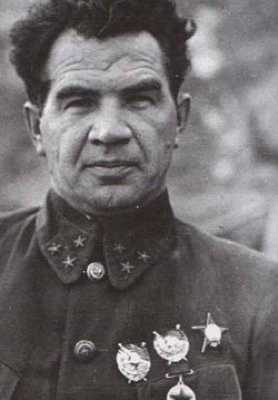
Beyond the obvious suffering of the troops on the ground level, Stalingrad also took a heavy toll on the generals in charge of leading them. Besieged on either side by two leaders of varying insanity and stubbornness, being a general during the Battle of Stalingrad was far from a walk in the park. General Vasily Chuikov, a lieutenant general in the Red Army and one of the key figures in the battle of Stalingrad developed stress induced eczema of such a severity that he was forced to completely bandage his hands (pictured 2nd from left). General Paulus, in charge of the German 6th Army developed a tic in his right eye that would eventually take hold of entire right side his face. The German Chief of the Army General Staff, Kurt Zeitzler, so appalled by the conditions the troops were facing since the airdrop strategy began, reduced his rations to those of the ground force in Stalingrad, after losing 26 pounds in two weeks, an irritated Hitler forced him to begin eating regular meals again.
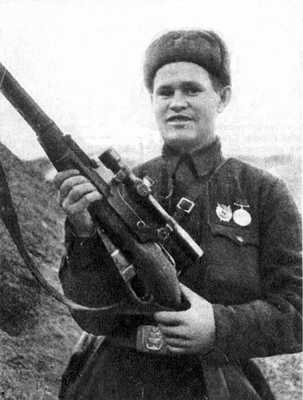
Aside from Simo Hayha, Zaytsev is the most well known sniper in history and the Battle of Stalingrad was where he cut his teeth. Like most of histories greatest snipers, a simple farm boy, he was born in the Ural Mountains and honed his skills hunting deer and wolf with his grandfather. Originally serving in the Soviet Navy as a clerk, which seems like a gross misappropriation of his skills, he volunteered to be sent to the front line at the outset of the German invasion. Zaytsev was much more than just a sharpshooter though, his improvisation of the equipment at hand was ingenious. Predating modern anti-material rifles by decades he attached a Mosin-Nagant scope to an anti tank gun so that he could take out enemies who were taking cover behind walls, the 20mm round proving proving brutally effective for this task. He established a sniper school in a factory in the middle of Stalingrad, bear in mind this was during the battle itself, his 28 students going on to kill and estimated 1000-3000 soldiers during the course of the war. Almost blinded during a mortar attack, his sight was restored by a Professor Filatov, a pioneering eye surgeon and he went straight back out to the front line, finishing the war in Seelow Heights, around 60 miles from Berlin. He died in 1991, aged 76, ten days before the dissolution of the Soviet Union which he’d fought to protect. His final request was to be buried at Stalingrad alongside his fallen comrades, after initially being buried in Kiev he was reburied in 2006 in Volgograd (present day Stalingrad) with full military honors.
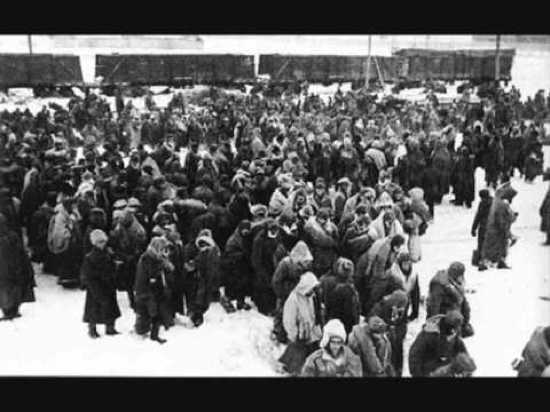
Living conditions on the ground in Stalingrad were unimaginably terrible, at the beginning of the battle, a regular Red Army conscript had a life expectancy of just 24 hours, this increased marginally if you were a Soviet officer to around 3 days. The Soviets initially after being caught on the back foot, had to endure hardships that today we would find hard to comprehend, cannibalism was a common occurrence amongst the starving and besieged populace. Rats became a staple of most peoples protein intake, soldiers and citizens alike would go around picking dead horses clean of meat. Initially a poor supply chain meant that the Soviets had to strip their dead comrades of their uniform to outfit the continual stream of new draftees. This however was turned on its head when the battle turned in the Soviets favor, the now trapped German 6th Army began referring to the pocket they inhabited within Stalingrad as “The Cauldron”. Fighting had ground to a bitter floor by floor affair, the average engagement would involve the Soviets holding a living room adjacent the to Germans in the kitchen. Slowly starving to death, they resorted to slaughtering the 10,000 horses they had brought to the battle as a source of food. The Germans also had another problem to contend with, the cold, ill equipped for winter warfare as Hitler had arrogantly thought the battle would be over by the winter, the Germans now had to face temperatures of minus 30 degrees celsius (for comparison the temperature in your freezer is about minus 18 to 19 degrees celsius). Too weak to attempt the breakout that Hitler ordered too late, those who hadn’t been killed or starved, simply froze to death.
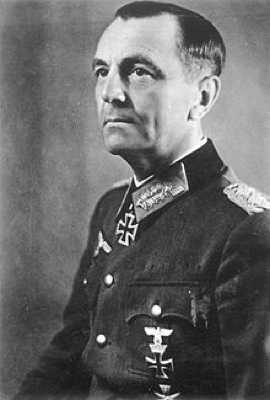
Despite having been promoted to Field Marshall by Hitler (an encouragement to commit suicide as no German Field Marshall had ever been taken alive), General Paulus surrendered on January 31st, followed shortly by the remainder of the Axis forces on February 2nd. This being the Soviet Union during the reign of Stalin, POW’s weren’t going to be afforded any small mercy (Stalin wasn’t known for looking after his own people too well). The German prisoners were immediately sent on a series of death marches to gulags or put to work rebuilding Stalingrad, weakened by starvation, disease and wounds, 75,000 German prisoners of war died within three months of their surrender. In an attempt to reduce the death rate, the Soviets abandoned the death marches and put the remainder on transports, however this did little to help and the amount of survivors again plummeted from 35,000 to around 17,000. In total, of the 110,000 captured just 5,000 returned home to a divided Germany in 1955, a full 13 years after the battle had ended.
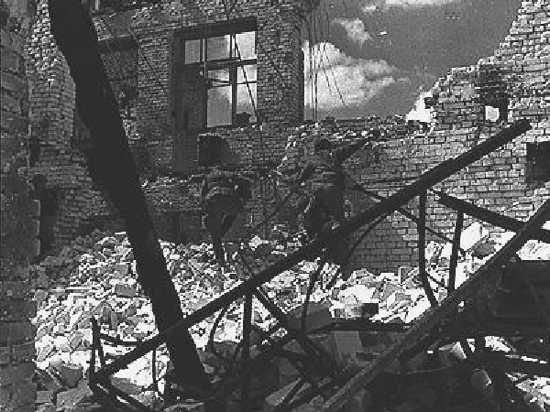
Only at the end did it become apparent the scale of destruction and death that had occurred at Stalingrad, estimates vary but the death toll is generally accepted to be somewhere between one and two million, though not universal it is generally accepted to be the single largest death toll in any battle in mankind’s history. By the end of what turned into a decisive Soviet victory the city of Stalingrad was comparable structurally to Hiroshima or Nagasaki, what had started as an attempt to seize a city had descended into madness amongst nothing but rubble. It has been noted that the city was important to both Hitler and Stalin for propaganda purposes, to capture or lose a city named after the Soviet leader would’ve proven a major coup or a disaster in morale to each prospective side. In the end it became irrelevant, Nikita Krushchev, one of the generals who fought in Stalingrad and later the Soviet Premier changed the city’s name to Volgograd in 1961. Around this time a huge statue was erected in memory of the battle, named “The Motherland Calls” it is comparable in height to the Statue of Liberty and stands on what remained of Mamayev Kurgen. Volgograd today has a population of around one million and is an important industrial hub within modern Russia.
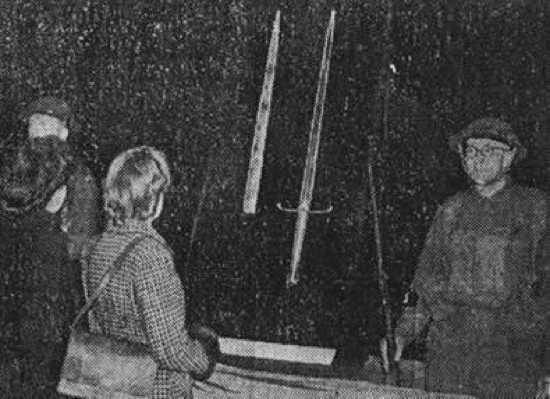
In honor of the defenders of Stalingrad, King George VI of the United Kingdom commissioned a ceremonial longsword to be presented to the Soviet Union. Thirty six inches long, with a hand grip bound in 18 carat carat gold wire and a pommel of rock crystal, the blade was inscribed in Russian and English with the words:
“TO THE STEEL-HEARTED CITIZENS OF STALINGRAD. THE GIFT OF KING GEORGE VI. IN TOKEN OF THE HOMAGE OF THE BRITISH PEOPLE”
Believe it or not the sword was created by Wilkinson Sword, yes, the same company who make the razors (Our American readers might know them by the name Schick). The sword was presented by Winston Churchill to Joseph Stalin at the Tehran Conference in 1943 and resides today at the Stalingrad Museum in Volgograd.





